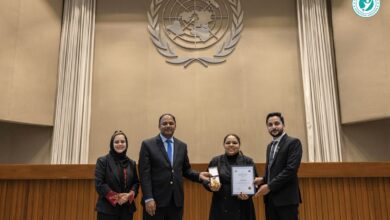Leading From the Skies: Why India Needs More Women in Cargo & Aviation Leadership

By Dr. Vandana Singh, Chairperson – Cargo, Federation of Aviation Industry India
India’s aviation and cargo sectors are soaring to new heights, playing a crucial role in shaping the nation’s economic trajectory and global connectivity. Yet, despite this growth and transformation, one aspect continues to lag behind — the representation of women in leadership roles. While we celebrate the increasing number of female pilots in the skies, a critical question remains: where are the women at the helm of decision-making in aviation and cargo?
As one of the fastest-growing aviation markets in the world, India is uniquely positioned to lead by example. The air cargo sector, in particular, has emerged as a powerhouse, driven by the e-commerce boom, advancements in pharmaceutical logistics, and rapid infrastructural developments. However, this momentum must also translate into building a more inclusive leadership landscape. Today, women remain significantly underrepresented in senior roles across cargo management, airline operations, ground handling, regulatory bodies, and strategic logistics functions.
This gap is not merely a matter of optics or equality — it is a missed opportunity for performance and innovation. Numerous global studies have established that gender-diverse leadership teams tend to outperform their peers. In high-pressure, high-complexity industries like aviation, diverse perspectives lead to more balanced decision-making, greater resilience, and stronger business outcomes. India cannot afford to overlook this potential if we aspire to become a global aviation leader.
There is a pressing need to reframe the narrative surrounding women in aviation. Leadership in this space goes far beyond cockpits and crew cabins. Women must be seen as strategic thinkers and trailblazers in areas like freight optimization, sustainable cargo systems, drone logistics, airport infrastructure, and aviation technology. We must recognise and elevate the women who are already leading quietly — driving operational excellence in cargo hubs, managing global freight networks, and introducing technology-led innovations — often with little recognition.
From my position as Chairperson of Cargo at the Federation of Aviation Industry India, I have had the privilege of engaging with leaders and changemakers across the ecosystem. One common thread that stands out is that women who succeed in this space often do so by navigating an array of challenges — a lack of industry mentorship, unconscious bias, and limited access to networking and growth opportunities. Despite this, a new generation of women professionals and entrepreneurs in aviation is emerging, ready to take charge, innovate, and influence.
However, this readiness must be matched with structural support. We must nurture career pipelines that enable women to transition from mid-level management into leadership. Industry-led mentorship programs, proactive recruitment policies, and inclusive workplace cultures are essential to bridge this gap. Educational institutions and industry associations must come together to introduce young women to aviation and logistics as viable, exciting, and impactful career paths from an early age. At the same time, companies must embrace workplace flexibility, technology adoption, and family-friendly policies to ensure that women are retained and empowered to grow within the system.
True leadership in aviation demands a blend of vision, adaptability, and collaboration. These are qualities that women leaders bring in abundance. As India prepares for its next phase of aviation expansion, we must ensure that the cockpit of leadership includes voices that reflect our full potential. We must see more women not just participating, but leading from the front — guiding policy, managing complex supply chains, heading innovation, and shaping the future of air cargo and logistics.
For India to truly lead from the skies, our leadership must rise on wings of inclusivity. The time is now to elevate women in aviation, not as a symbolic gesture, but as a strategic imperative. Because the skies are not the limit — they are just the beginning.














